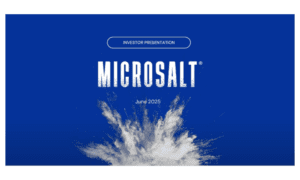A sodium alternative that tastes great and doesn’t come with the health concerns of conventional salt substitutes like MSG, MicroSalt® is changing the snack game for good.
Key takeaways:
- Surveys show that Americans snack multiple times a day.
- Many snackers want healthy, low-sodium options, but conventional salt substitutes often fall short on flavor and come with their own health concerns.
- Great-tasting, all-natural MicroSalt®️ is the answer to delicious, healthy low-sodium snacking.
A 2020 survey conducted by the International Food Information Council revealed that about a quarter of Americans snack multiple times a day, which isn’t necessarily a bad thing. Snacking can be good for our health. It all boils down to what snacks we choose. For instance, there’s absolutely nothing wrong with reaching for a handful of carrot sticks or an apple in the middle of the afternoon.
Unfortunately, when we think of snacks, we usually think quick and tasty, which rarely means nutritious.
And what’s worse, regular intake of ultra-processed snacks, which contain added salt, sugar, and fats and are low in nutrients but high in calories, can actually make people crave more of these types of foods. This leads to a cycle of addictive snacking that has ruinous effects on public health.
Low-sodium snacking
As more and more people become aware of this problem, demand for healthier snacks is on the rise. This is especially good news on the sodium front, as an estimated 75% of sodium in the average U.S. diet comes from processed foods, including snacks. Simply making better snack choices could keep more Americans within the recommended intake of no more than 2,300 mg of sodium per day, helping lower their risks of developing high blood pressure, heart attack, stroke, stomach cancer, osteoporosis, and other sodium-related conditions.
Learning how to read and understand food labels is an important first step in making healthier snack choices. Even sweet snacks can contain excessive amounts of sodium that push people over that 2,300 mg daily limit, so highlighting the amount of sodium contained in all snack products could help consumers make better choices.
An even better option – one recommended by most health professionals – would be to ditch the processed stuff and stick with natural whole foods, including:
- Crunchy – raw vegetable sticks, nuts, seeds, whole grain crackers, apple
- Creamy – cottage cheese, yogurt, hummus, avocado
- Sweet – chopped fresh fruit, dark chocolate
- Savory/Salty – cube or slice of cheese, roasted chickpeas, a handful of nuts, nut butter
Don’t forget that balance is still important, and your snacks should contain a healthy mix of protein, fiber, and whole grains.
Salt substitutions in food manufacturing
Of course, most of us don’t want to give up our chips and cookies, which is driving demand for lower-sodium processed snacks. The problem? Flavor.
In many cases, food manufacturers have tried incorporating salt substitutes into their products to reduce the amount of sodium. This sometimes consists of a blend of sodium chloride and potassium chloride, which contains less sodium chloride than traditional table salt. Unfortunately, potassium chloride is known to have a bitter aftertaste, which can affect the product’s flavor.
Salt substitutes also come with their own share of health concerns. They can be dangerous for people with certain conditions, including kidney disease, heart disease, liver disease, or diabetes. Also, using salt substitutes while taking certain medications such as ACE inhibitors and potassium-sparing diuretics can raise blood potassium to risky levels.
With all their health and flavor issues, are conventional low-sodium snacks really worth it? Many consumers don’t think so. But the good news is that there’s a new, 21st-century alternative that can be a much better option.
MicroSalt®️: The future of low-sodium snacking
One new approach to low-sodium snacking is MicroSalt®️. It’s a healthier and significantly lower-sodium product than regular salt that doesn’t compromise flavor. MicroSalt®️ is made using a patented technology that creates microparticles that are 100 times smaller and taste twice as salty as typical salt crystals. The result? You can use half the amount to achieve the same salty flavor while cutting sodium content by 50%.
By incorporating MicroSalt®️ into their formulas, food manufacturers could use less salt without sacrificing the flavors their consumers love. While other sodium alternatives have a bitter aftertaste, MicroSalt® doesn’t – because it’s real salt. By delivering twice the flavor for half the sodium, MicroSalt® can help manufacturers produce healthier, significantly lower-sodium products that don’t compromise on flavor or contribute to health risks.
But MicroSalt®️ is better for your products in more ways than just reducing sodium content. MicroSalt®️ is also:
- 100% natural with no added potassium chloride
- Certified Non-GMO
- Gluten-free
- Kosher Certified
MicroSalt®️ is your solution
MicroSalt®️ is the future of low-sodium snacks. Using MicroSalt®️ to reduce your product’s sodium content while maintaining consistent flavor can be a game-changer in the hyper-competitive world of snack foods.
The old sodium substitute blends cause too many potential health risks (not to mention their issues with flavor) to provide a truly consumer-friendly solution to the problem of healthier snacking. And when you consider the costs involved in changing your processes to accommodate these different ingredients, it really isn’t worth it.
MicroSalt®️, on the other hand, is still salt. You don’t have to change anything to incorporate it into your product, you just have to use less. What could be easier?
It’s time to take advantage of the market potential MicroSalt®️ provides and change the way your company approaches the growing consumer demand for healthier snacks. If you’re ready to take a step into the future, get in touch, and let’s talk about how MicroSalt®️ can help position your brand at the forefront of the low-sodium revolution.




